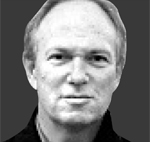Abe’s long march

Ian Buruma
Abe chose to reinterpret the Constitution because revising it would require the approval of two-thirds of the Japanese Diet. Given that most Japanese are still allergic to military force, securing the necessary votes would have been impossible.
The reinterpretation will almost certainly result in protests from China and South Korea against resurgent Japanese militarism. Because Abe is the nationalist grandson of a former prime minister who was once arrested as a war criminal, and because he has paid public tribute to soldiers who died for the emperor in World War II, these protests might seem reasonable.
Abe’s break with Japan’s pacifist consensus is beyond doubt. But the circumstances under which Japan would use force are so restricted that a revival of militarism is still a very long way off. More worrying is the effect on Japanese democracy: Elected governments do not simply change the meaning of the Constitution without even bothering to get parliamentary support.
There is, however, an odd contradiction in Abe’s nationalism. Constitutional pacifism was part of the postwar order imposed by the United States during occupation and largely supported by the Japanese people, who were tired of war. Unlike in Germany, Japan had no Hitler or Nazi party on which to blame their wartime atrocities. What needed to be purged instead, postwar reformers believed, was a specific form of Japanese militarism, rooted in emperor worship, the samurai tradition, authoritarian “feudalism” and so on.
Much in the remaking of Japan after 1945 is still to be admired: democracy, women’s suffrage, land reform, freedom of speech. But taking away Japan’s sovereign right to use military force had one major consequence: Japanese security was put almost entirely into American hands, reducing Japan to the status of a vassal state. That is why the main goal of nationalist-minded Japanese leaders, starting with Abe’s grandfather, Nobusuke Kishi, has been the return of full Japanese sovereignty by revising Article 9.
That was not possible when Kishi was prime minister in the late 1950s. The Japanese were not ready for it and Kishi was tainted by his wartime record as Minister of Munitions. Abe’s dream is to make it happen now - and to go further. He would like to restore some aspects of an older Japan, discredited by Japanese military behavior, such as patriotic pride, a more central role for the imperial institution, and even a reappraisal of Japan’s wartime record itself.
Hence his tributes to the Yasukuni Shrine, where the souls of imperial soldiers, including notorious war criminals, are worshipped. Many Asians, including some Japanese, see this as a sign of new militarism. Abe would like it to be viewed as an attempt to restore Japan’s international reputation as a “normal country.” But Abe’s idea of normality is not yet shared by the majority of Japanese, let alone other Asians.
The contradiction in Abe’s nationalism is this: even as he talks about sovereignty regained and patriotic pride, he has done nothing to distance Japan from the postwar dominance of the United States. On the contrary, his reinterpretation of the Constitution is meant to help the U.S. in its military policing of East Asia.
In fact, what appears to be driving Abe’s endeavors even more than the desire to revise the postwar order in Japan is a widely shared fear of China’s increasing regional dominance. A cursory glance at the Japanese press, or even the kind of books piled high in Japanese bookstores, shows just how frightened the Japanese are. All of the talk in Tokyo is about Chinese aggression in the East and South China Seas.
Abe’s reinterpretation, then, is not really a radical departure from the postwar order at all. China’s growing power has actually reinforced Japanese dependence on the United States for its security. Japan’s main worry is that the United States may not wish to risk a war with China over territorial disputes in the East China Sea. What is feared most, in addition to the rise of China, is the possible decline of the United States.
The Japan-U.S. alliance is an irritation to the Chinese, who would like the United States to get out of the way in order to be Asia’s dominant player. Or so they say in public. In fact, Chinese attitudes may be more complicated and less unified than they seem.
Indeed, China faces a rather stark choice. Either it must live with the continued Pax Americana in Asia, for as long as it lasts, or face a more independent, nuclear-armed Japan. Privately, many Chinese might still prefer the former.
This may seem to be the most stable solution. In fact, it is fraught with danger. To be sure, the U.S. military presence still imposes a certain order with which most parties can live; but it risks dragging the world’s largest military power into petty regional conflicts, a prospect that should alarm us one century after 1914.
Copyright: Project Syndicate, 2014.
*The author is professor of democracy, human rights and journalism at Bard College and the author of “Year Zero: A History of 1945.”
By Ian Buruma










with the Korea JoongAng Daily
To write comments, please log in to one of the accounts.
Standards Board Policy (0/250자)